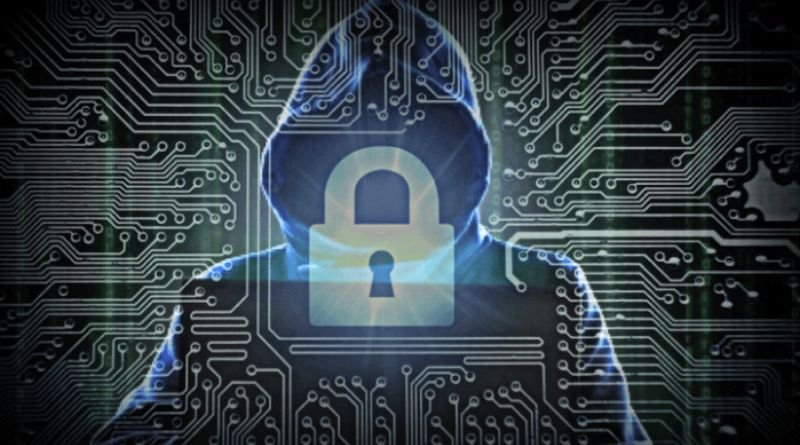As we move further into 2024, it’s clear that cybersecurity remains one of the most critical concerns for individuals, businesses, and governments around the world. In recent months, several high-profile cyber attacks have made headlines, highlighting both the increasing sophistication of hackers and the vulnerabilities in digital systems. These breaches have affected a wide range of industries, including healthcare, finance, government, and even tech giants, underscoring the growing need for robust security measures.
In this article, we’ll explore some of the recent cyber attacks in 2024, how they occurred, who was impacted, and what organizations and individuals can do to protect themselves from similar threats. We’ll also answer some common questions to help clarify the risks and response strategies associated with cyber attacks.
Table of Contents
Notable Recent Cyber Attacks in 2024
1. The Healthcare Data Breach at HealthCo
One of the most significant cyber attacks of 2024 targeted HealthCo, a major healthcare provider in the United States. In February, the company suffered a ransomware attack that compromised the personal health information of over 5 million patients. The attackers encrypted sensitive medical records and demanded a large ransom for the decryption key.
What Happened?
- Hackers infiltrated HealthCo’s network through a phishing email, gaining access to internal systems that contained patient data.
- The data exposed in the breach included medical records, Social Security numbers, and financial information.
- Although HealthCo worked with law enforcement and cybersecurity experts to contain the breach, the hackers still threatened to release the data publicly if their ransom demands were not met.
Impact:
- HealthCo’s reputation took a significant hit, with many patients expressing concerns about their privacy and security.
- The breach raised questions about the adequacy of cybersecurity measures in the healthcare sector, which is often a target due to the value of the data it holds.
2. The Ransomware Attack on Global Finance Group
In March 2024, Global Finance Group (GFG), one of the largest financial service providers in Europe, was hit by a sophisticated ransomware attack. The hackers encrypted critical systems, locking GFG out of its own network and demanding millions of dollars in cryptocurrency to restore access.
What Happened?
- The ransomware attack was traced back to a vulnerable software used by GFG to manage its cloud services.
- Hackers gained access to sensitive financial data, including customer account numbers, bank transaction details, and investment portfolios.
- GFG’s operations were severely disrupted for days, affecting its ability to process transactions and provide customer support.
Impact:
- Customers were unable to access their accounts, leading to widespread frustration and loss of confidence in GFG’s ability to safeguard financial assets.
- The attack also disrupted the stock market in certain regions, as investors grew wary of the company’s stability.
3. Supply Chain Attack on Major Tech Company X
Another significant cyber attack in 2024 involved Tech Company X, a major player in cloud computing and IT infrastructure. The company experienced a supply chain attack, where hackers compromised a third-party software vendor used by Tech Company X to distribute malware to its clients.
What Happened?
- The attackers infiltrated the vendor’s software updates and inserted malicious code into the update patches.
- Tech Company X unknowingly distributed the infected updates to its customers, leading to widespread data theft and system compromises.
- Sensitive client data, including source code, client communication logs, and internal emails, was exposed as a result of the breach.
Impact:
- The breach not only damaged Tech Company X’s reputation but also highlighted the growing risks associated with third-party software vendors and the need for stricter security protocols.
- Clients affected by the attack faced significant security risks, with several high-profile companies, including major banks and government agencies, among the victims.
4. State-Sponsored Cyber Attack on a Government Agency
In a highly concerning development, a state-sponsored hacking group targeted a U.S. government agency in April 2024, using a zero-day vulnerability to access classified information. This attack was part of a larger series of cyber espionage activities attributed to a foreign nation-state.
What Happened?
- The attackers exploited a previously unknown security flaw in a government-issued software tool to gain unauthorized access to sensitive materials, including classified intelligence reports and diplomatic communications.
- The breach was part of a larger trend of cyber espionage, where state actors seek to steal sensitive information for political or military advantage.
Impact:
- This attack raised alarms about the vulnerability of government agencies and the potential for hostile foreign powers to infiltrate national security systems.
- It also underscored the importance of continuous monitoring and rapid response to emerging cyber threats, especially those orchestrated by sophisticated nation-state actors.
Common Themes in Recent Cyber Attacks
While each of these cyber attacks has unique characteristics, there are a few common themes that have emerged:
1. Ransomware Remains a Persistent Threat
Ransomware continues to be one of the most prevalent and destructive forms of cyber attack. Attackers often demand hefty ransoms in cryptocurrency in exchange for unlocking encrypted data. This trend shows no sign of slowing down, as more organizations fall victim to these attacks, often with devastating financial and reputational consequences.
2. Supply Chain Attacks Are on the Rise
As organizations increasingly rely on third-party vendors and software providers, supply chain attacks have become a common method for hackers to gain access to multiple targets. By compromising trusted software updates or services, attackers can infect a wide range of organizations, often before the breach is even detected.
3. Sophistication of Attackers
The attackers behind these breaches are often highly sophisticated, with the ability to exploit vulnerabilities in both technology and human behavior. Whether through phishing, exploiting zero-day vulnerabilities, or using advanced malware, cybercriminals are continually evolving their tactics to stay one step ahead of defenders.
4. Sensitive Data is Always at Risk
Personal, financial, and classified data is a major target for hackers. The exposure of this type of information can have serious consequences, from identity theft and financial fraud to geopolitical tensions and economic instability.
What Can Organizations Do to Protect Themselves?
In light of these recent cyber attacks, organizations across all sectors must prioritize their cybersecurity efforts. Here are some key strategies:
1. Implement Multi-Layered Security
A single security measure is often not enough to protect against cyber threats. Organizations should employ a multi-layered security approach that includes firewalls, encryption, anti-malware software, and intrusion detection systems to detect and block threats early on.
2. Conduct Regular Vulnerability Assessments
Organizations should regularly assess their networks and systems for potential vulnerabilities, particularly those in third-party software and cloud services. Regular penetration testing and vulnerability scans can help identify weaknesses before attackers can exploit them.
3. Train Employees in Cyber Hygiene
Human error is a leading cause of security breaches. Employees should be trained to recognize phishing emails, use strong, unique passwords, and follow best practices for online security. Implementing security awareness programs can reduce the risk of successful attacks.
4. Develop a Comprehensive Incident Response Plan
No system is completely impervious to attack. Organizations should have a well-defined incident response plan in place to quickly detect, contain, and mitigate the damage from a breach. This plan should include procedures for notifying affected parties, working with law enforcement, and recovering data.
5. Adopt Zero-Trust Security Models
A zero-trust security approach assumes that all network traffic, even from internal sources, could be malicious. By continuously verifying the identity and permissions of users and devices, organizations can reduce the likelihood of unauthorized access.
Frequently Asked Questions (FAQs) About Recent Cyber Attacks
Q1: What is ransomware, and how does it work?
Ransomware is a type of malicious software that encrypts a victim’s files, making them inaccessible. The attackers then demand a ransom, usually in cryptocurrency, in exchange for decrypting the files. Organizations are often left with the difficult decision of paying the ransom or attempting to recover data from backups.
Q2: What is a supply chain attack?
A supply chain attack occurs when cybercriminals target a trusted third-party vendor or service provider to gain access to the networks of their customers. This can happen through infected software updates, compromised credentials, or other methods that allow the attacker to infiltrate multiple organizations.
Q3: How can I protect myself from cyber attacks?
To protect yourself from cyber attacks, use strong, unique passwords, enable multi-factor authentication (MFA) where possible, and be cautious when clicking on links or downloading attachments in emails. Additionally, ensure your devices are up-to-date with the latest security patches and use reputable antivirus software.
Q4: Are state-sponsored cyber attacks a growing concern?
Yes, state-sponsored cyber attacks are a growing concern, especially as geopolitical tensions rise. Nation-state hackers often target government agencies, critical infrastructure, and high-profile organizations to steal sensitive information or disrupt operations.
Q5: What should an organization do if they experience a cyber attack?
If an organization experiences a cyber attack, it should immediately implement its incident response plan, notify affected parties, work with cybersecurity experts to contain the attack, and cooperate with law enforcement if necessary. It’s also important to notify customers, especially if sensitive data was exposed.
Conclusion
The recent cyber attacks in 2024 underscore the increasingly complex and dangerous nature of the cybersecurity landscape
. From ransomware and supply chain attacks to sophisticated state-sponsored cyber espionage, organizations of all sizes and industries need to be vigilant about protecting their systems and data. By investing in robust security measures, staying informed about emerging threats, and educating employees, businesses and individuals can reduce their vulnerability to these ever-evolving cyber threats.






